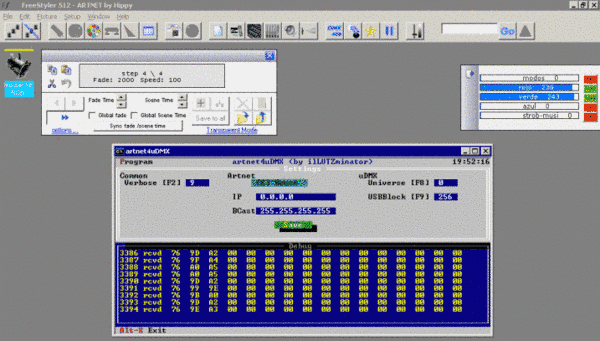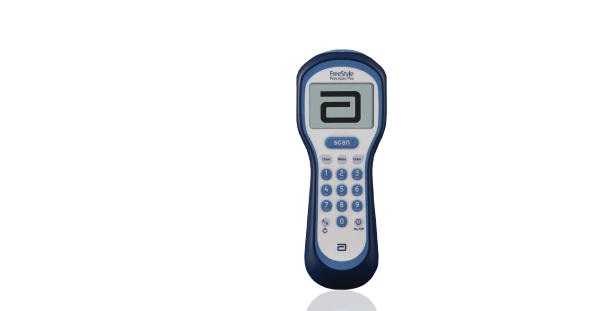
- STYLER UDMX TIMING GENERATOR TO QUICKLY
- STYLER UDMX TIMING DOWNLOAD AS AN
- STYLER UDMX TIMING UPDATE OLD ONES
The DMX Operator 384 is a 19-inch rack mount controller that controls both DMX and Midi. 486 3588 CONTROLS & FUNCTIONS 1. Worlds first direct USB to DMX512 cable UDMX is an interesting middle man between your computer and your DMX lighting fixtures.
Styler Udmx Timing Generator To Quickly
Supported operating systems: Windows, MAC OS, Linux.In this tutorial we will create another page of playbacks, a short opening sequence using a theatre cue stack and use the FX generator to quickly make some snazzy effects with the Beam Fans. Microprocessor controls DMX512 timing - no flicker problems like the 'Open' and clones. The perfect complement for FreeStyler and the DJ focused SoundSwitch. If you haven’t already done so, work through MagicQ Tutorials Part 1 and 2 before tackling this one.Built in DMX Decelerator functionality helps get your rig running smoothly even with the cheapest light fixtures. Traktor, Ableton or a midi sync clock supported DJ mixer.In the final part of our Cham Sys MagicQ PC Getting Started tutorials, we work to the final stage of preparing our show for the fictional 3 piece band using a simple rig of PARS. Sound 2 Freestyler DMX is a free Windows tool to synchronize DMX lights to FreeStyler by the use of a midi sync clock.
Styler Udmx Timing Download As An
Editing CuesDMX cable has been covered so many times before, and the types of cable you should. Freestyler ist eine kostenlose Profesionelle Lichtsteuerungssoftware und wird von vielen erfarenen DJs und Lichtdesigner genutzt.Die weiter entwicklung wird von einem riesigen Netz von Benutzern weltweit untersttzt.FreeStyler ist MEVP (Magic 3D Easy View protocol) kompatible und kann mit 'Magic 3D easy view' kostenlos verwendet werden.New:All three of the MagicQ conventional lighting control tutorials are available for download as an ebook (pdf), so you can print out and follow along. Freestyler had one thing that changed the game and thats it had extra software for making and setting up lights.
Styler Udmx Timing Update Old Ones
Depending on the SETUP – > Prog Settings, the programmer then either clears itself or leaves the data there for you to carry on working – adjusting levels and recording another cue, for example.The reason you would like to leave values in the Programmer until you are ready to CLEAR them is you can use those values to record new cues, update old ones or even remove parts of other cues altogether. This loads the entire cue in to the Programmer (the CLR button light shows that there is information there) and we can make changes to the levels using any method – Keypad, Groups and Encoder, Programmer spreadsheet or the Programmer Intensity Window.When happy with the new levels (that are output to stage and override the current state of the fixtures we changed) pressing UPDATE. Getting edit information into the ProgrammerDifferent consoles have their own way of loading information into the programmer and the MagicQ PC has a few choices.At it’s simplest, we just want to load the Blue Wash Cue into the programmer to be edited so we use INCLUDE (a term borrowed from Avolites) then Choose the S button the playback fader. You want to adjust the levels in the Blue Wash only, editing that information in the programmer before saving it back to the Blue Wash fader.A non programmer based desk that records output requires that you record individual cue information without other playbacks running (in this case, Red Wash) – a pain when you need to program or edit during rehearsals and don’t want to alter the entire look on stage.But, the MagicQ is a programmer console and we can make individual changes and add them to specific cues. This means that you can edit parts of cues while leaving the other playbacks outputting and the end result will not mix your data up.An example: During the sound check you are playing back out a two colour wash using two faders– Red and Blue.
This is not a joke, it has happened on more than one occasion. While the usefulness of not being able to see what you are doing can be a bit limited, using Blind Mode has been a traditional method of inputting “known” data (like dimmer levels recorded on an old fashioned channel sheet) while the show is running.Imagine the electrician of a touring show, having not had enough time to put both acts into the house lighting console, carefully entering and recording the cue levels for Act II in blind mode during Act I. The concept is to enable you to record or edit cue information without it appearing live on stage. Blind ModeIf you have used any kind of memory lighting desk, you may have come across Blind Mode before. That’ll be why those blues are still up, even after you have moved on to another task.All this talk of cue edits brings us neatly on to blind mode.
We could create a linked copy on multiple pages and on different faders but there is an easy way to make sure that a Memory, Stack or Chase appears in the same spot across every page. How about the Blinders – they always come in handy. Default CuelistsBefore we add some playbacks to , let’s consider that we might want some faders to appear on every single playback page. The PROG data window is your friend here but most operators also build a rough list of “things I have done since I last hit CLEAR” in their heads. To stop programmer data altering the output either CLEAR the programmer and dump everything in it or hit BLIND to hide it.When it comes to using a programmer based console in a complex environment like rehearsing while you are programming, it pays to know exactly what is in the programmer. The recording and editing process remains the same.It is important to understand the effects on stage of both the Programmer (overrides conflicting playback data) and Blind Mode (hides the Programmer data from live output) when you find things aren’t behaving as expected.
Now, which ever playback page you change to using NXT or PRV , the Blinders remain available.All shows are different but there is often a cue that you need constant access to. Set it to On and you will notice that the Blinders playback now has DEF above it’s label. Wing / Extra playbacks are marked with a W-# and can be activated from the PB window.But we just want to make our Blinders playback a default, so select it’s “S” button and look at the bottom left encoder – it has a Default On/Off toggle. As the show files are universal, there is a possibility that a show was created with an extra fader wing and memories place on playbacks that you don’t have buttons for. Open the PB window.The Playback Window gives you a graphical view of the playbacks on the desk, can be used to organised playback layout and, most importantly, gives you access to playbacks that might not be physically available on your version of the MagicQ.
A page above, and sometimes below, are variations on the playback which include FX like Pan/Tilt Movement or Intensity effects.How you organise PBs is entirely up to you. The MagicQ even has a little feature lets you load a text file set list which it then uses to re order your song pages ready for the show that night.Fast/Slow pages – When busking an unknown show, it’s useful to be able to flick to a page of stuff that you know fits the tempo.Warm/Cold pages – Again, an unknown show – you decide if the next track is an upbeat sunny one or a moody, bluey one.Main page and FX – I use this one quite a lot, it consists of a Home page to keep most things you regularly need like colour washes and “backing” stuff. While the set list order changes, the actual cues per song don’t. Here are some different ways that programmers might organise pages for this kind of gig.Song per page –This is a classic techniques that is good if you are touring a specific act with your own set programming on a per song basis.
It all sounds a bit Spinal Tap for a 3 piece, but this is a tutorial.Open up our Custom Prog view, change to playback (using NEXT PAGE ) and clear the programmer.Our opening sequence will start in blackout, some music will build, we will do some groovy lighting stuff and the band will appear to rapturous applause. This will be used for the opening sequence of the show – to bring the band on stage. Creating a theatre stackNext, we are going to create an opening sequence of cues that run as a theatre stack. In this tutorial series, we are looking at different features of the MagicQ PC so the actual page layouts are not meant to be examples of the best method.


Now, the stack advances when we hit the Go (>) button of that playback. We need to change that with the Cue Timing softbutton.


 0 kommentar(er)
0 kommentar(er)
